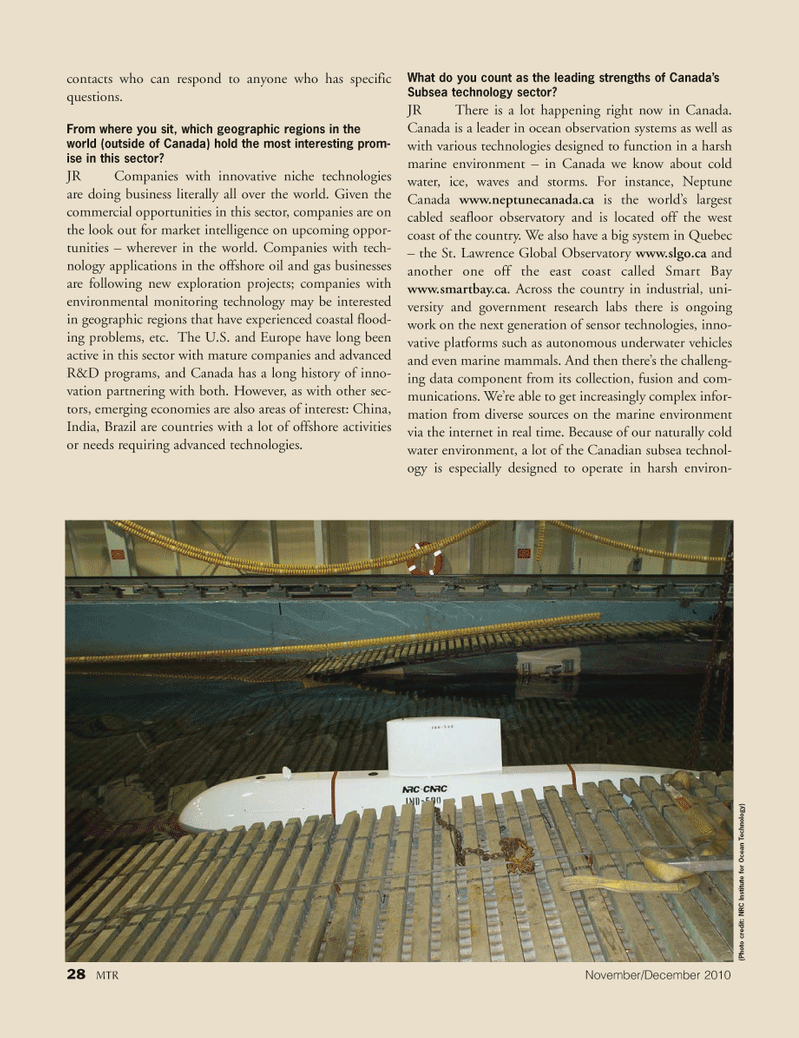
Page 28: of Marine Technology Magazine (November 2010)
Fresh Water Monitoring and Sensors(lakes, rivers, reservoirs)
Read this page in Pdf, Flash or Html5 edition of November 2010 Marine Technology Magazine
contacts who can respond to anyone who has specific questions.
From where you sit, which geographic regions in the world (outside of Canada) hold the most interesting prom- ise in this sector?
JR Companies with innovative niche technologies are doing business literally all over the world. Given the commercial opportunities in this sector, companies are on the look out for market intelligence on upcoming oppor- tunities – wherever in the world. Companies with tech- nology applications in the offshore oil and gas businesses are following new exploration projects; companies with environmental monitoring technology may be interested in geographic regions that have experienced coastal flood- ing problems, etc. The U.S. and Europe have long been active in this sector with mature companies and advanced
R&D programs, and Canada has a long history of inno- vation partnering with both. However, as with other sec- tors, emerging economies are also areas of interest: China,
India, Brazil are countries with a lot of offshore activities or needs requiring advanced technologies.
What do you count as the leading strengths of Canada’s
Subsea technology sector?
JR There is a lot happening right now in Canada.
Canada is a leader in ocean observation systems as well as with various technologies designed to function in a harsh marine environment – in Canada we know about cold water, ice, waves and storms. For instance, Neptune
Canada www.neptunecanada.ca is the world’s largest cabled seafloor observatory and is located off the west coast of the country. We also have a big system in Quebec – the St. Lawrence Global Observatory www.slgo.ca and another one off the east coast called Smart Bay www.smartbay.ca. Across the country in industrial, uni- versity and government research labs there is ongoing work on the next generation of sensor technologies, inno- vative platforms such as autonomous underwater vehicles and even marine mammals. And then there’s the challeng- ing data component from its collection, fusion and com- munications. We’re able to get increasingly complex infor- mation from diverse sources on the marine environment via the internet in real time. Because of our naturally cold water environment, a lot of the Canadian subsea technol- ogy is especially designed to operate in harsh environ- (Photo cr edit: NRC Institute for Ocean T e chnology) 28 MTR November/December 2010

 27
27

 29
29
